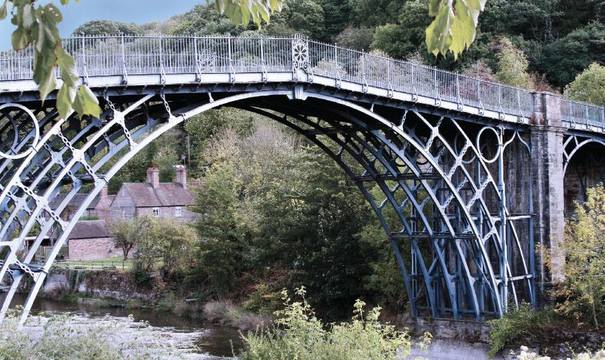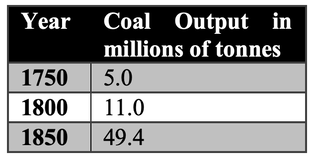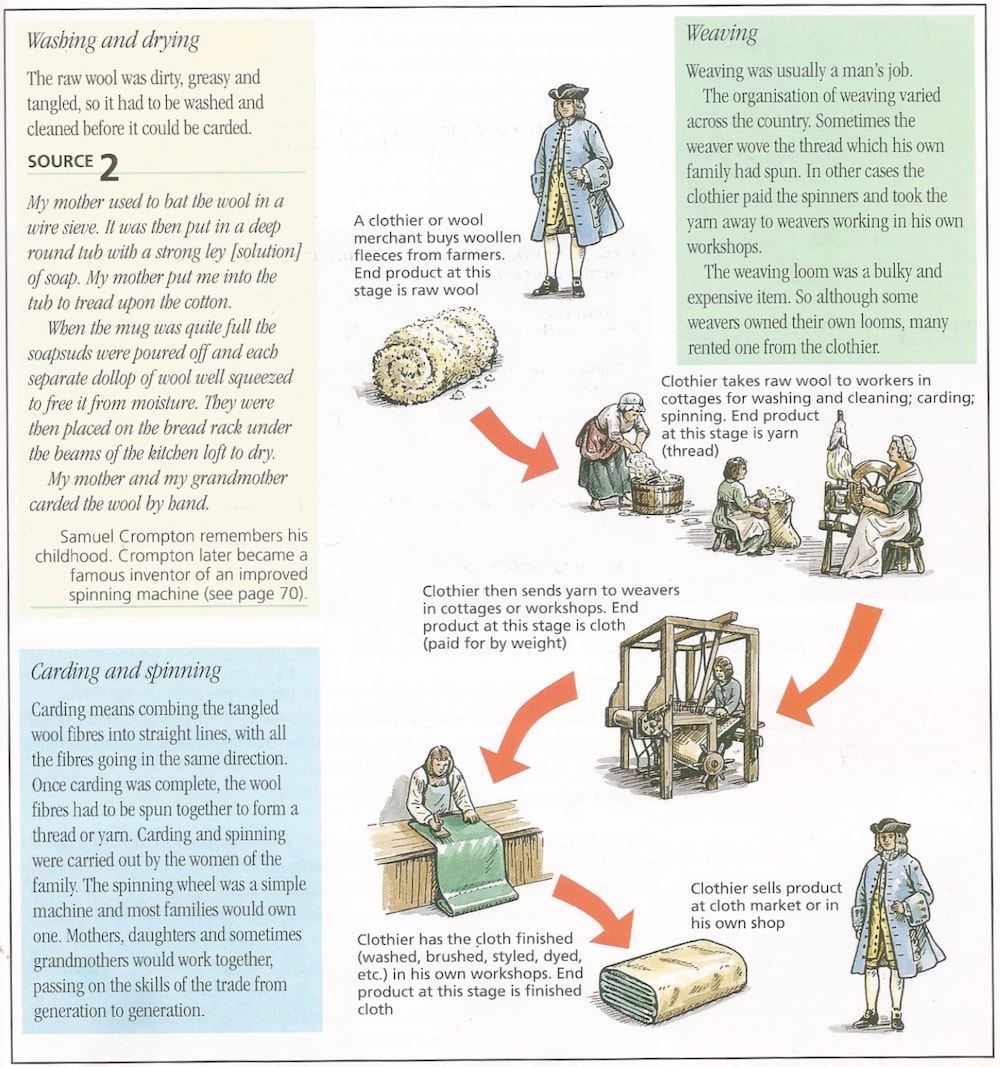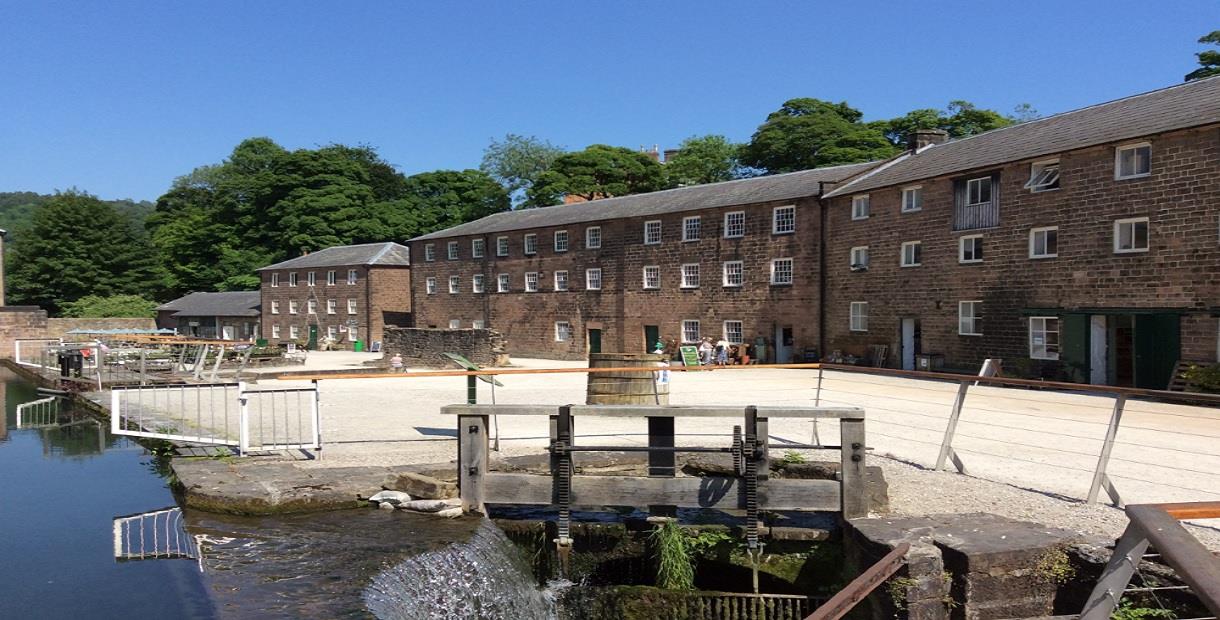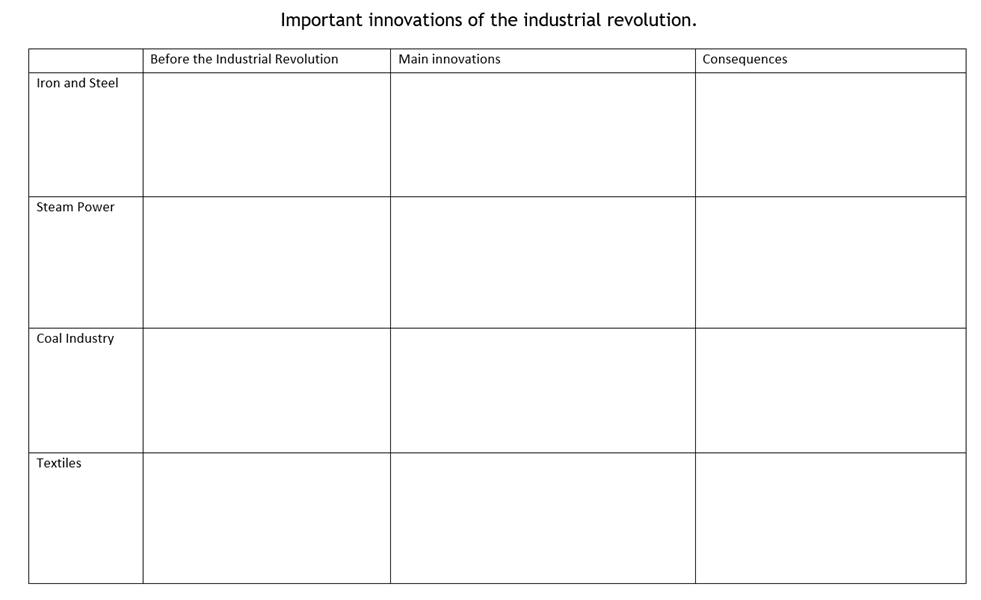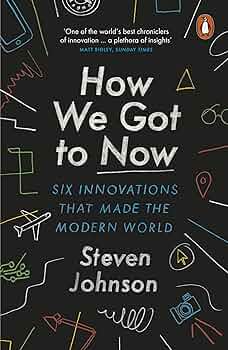Lesson 3 - The economic impact of the Industrial Revolution - Industry
Begin this lesson by making a copy of the diagram in the activities section.
Iron and steel
Iron and then steel were the materials of the Industrial Revolution. Their production on a large scale made engineering, transport and industrial change possible. The main changes in the iron and steel industries between 1750 and 1900 were in the scale of production.
Iron and then steel were the materials of the Industrial Revolution. Their production on a large scale made engineering, transport and industrial change possible. The main changes in the iron and steel industries between 1750 and 1900 were in the scale of production.
In 1709 Abraham Darby introduced coal based smelting (coke) which meant that the iron industry no longer depended on charcoal. To demonstrate their expertise the Darby family made the world's first Iron Bridge in 1786.
|
In 1783 Henry Cort's puddling and rolling process allowed the production of large sheets of iron. In 1775 ironmaster John Wilkinson used Watt's steam engine to work the bellows of his furnace. In the early 19th century the centre of Britain's iron production moved closer to coal reserves and the coast in south Wales and towns like Merthyr and Blaenavon. A later important innovation was John Naysmyth's invention of the steam hammer in 1839. This could hammer out huge sheets of iron to be used in making bridges and ships.
|
The Iron Bridge is a cast iron arch bridge that crosses the River Severn in Shropshire, England. Opened in 1781, it was the first major bridge in the world to be made of cast iron. Its success inspired the widespread use of cast iron as a structural material.
|
Steam power
The early factories were powered by waterwheels and were located next to rivers. Gradually steam replaced water as the main source of power in the Industrial Revolution. The process of developing a steam engine capable of meeting the needs of industry took decades. The first steam engine was developed to pump water out of the bottom of coal mines (see below 1712). By 1781 James Watt had managed to design a steam engine that could turn a wheel. The importance of Watt’s engine was that he had linked steam power to motion. However, his invention did not mean that every factory quickly changed to steam power. In 1800 there were only around 500 of Watt’s machines in use partly because Boulton and Watt controlled the patent. (see film below right) However, by 1850 steam power was far more widespread, especially in the cotton industry. It also had a crucial role in the development of the railways because steam was the power used to drive the engines.
The early factories were powered by waterwheels and were located next to rivers. Gradually steam replaced water as the main source of power in the Industrial Revolution. The process of developing a steam engine capable of meeting the needs of industry took decades. The first steam engine was developed to pump water out of the bottom of coal mines (see below 1712). By 1781 James Watt had managed to design a steam engine that could turn a wheel. The importance of Watt’s engine was that he had linked steam power to motion. However, his invention did not mean that every factory quickly changed to steam power. In 1800 there were only around 500 of Watt’s machines in use partly because Boulton and Watt controlled the patent. (see film below right) However, by 1850 steam power was far more widespread, especially in the cotton industry. It also had a crucial role in the development of the railways because steam was the power used to drive the engines.
|
|
|
|
|
The coal industry
The increasing demand for coal was due to a number of reasons: a growing population which used coal for heating, the building of the railways and the running of steam trains, the growth of the iron industry and the development of coal gas lighting which used coal to produce the gas. As a result of this increase in demand, it was necessary to dig deeper mines so more coal could be extracted. |
|
|
As the mines were dug deeper so miners came across more water and pockets of methane gas. Steam pumps were used to circulate air and remove water. The problem of explosions underground was tackled by John Buddie who, in 1810, used trap doors to introduce fresh air to various parts of the mine. Sir Humphrey Davy introduced the Davy safety Lamp in 1815. (right)
|
|
Textiles
In 1750 most of the textile process took place in the home in the ‘Domestic System’. The workers would spin thread or weave cloth and then sell their produce to merchants, this was known as the 'putting out' system. (See the diagram below) The benefit of this system was that the workers could work from home and control when and how they worked. For example, the tradition of not working on a Monday - 'St Monday' - was a consequence of this.
In 1750 most of the textile process took place in the home in the ‘Domestic System’. The workers would spin thread or weave cloth and then sell their produce to merchants, this was known as the 'putting out' system. (See the diagram below) The benefit of this system was that the workers could work from home and control when and how they worked. For example, the tradition of not working on a Monday - 'St Monday' - was a consequence of this.
Diagram from Ben Walsh - British Social and Economic History 1997.
The disadvantage was that cloth was expensive because the manufacturing process required a lot of labour. The change from the domestic system to the factory system was the result of the work of a number of inventors which were outlined in the first lesson.
|
Timeline of British Industrial Development
1733: John Kay's 'Flying Shuttle' invented; it increases the speed of textile weaving machines 1767: James Hargreaves's 'Spinning Jenny' invented; it greatly increases the output per person 1769: Richard Arkwright's 'Water Frame' 1779: Samuel Crompton takes out a patent for spinning by 'mule' 1780s: 477 inventors' patents registered (in the 1710s there had been only 38) Value of exports from Britain (mostly manufactured goods) top £10 million for the first time (in the 1700s they had been less than £5 million) 1782: James Watt's rotary steam-engine invented; it enabled concentration of power away from fast-flowing streams and thus aided growth of industrial towns 1783-4: Henry Cort's 'puddling' process allowed coal, rather than charcoal, to be the main fuel used in iron refining 1786: Edmund Cartwright's power loom invented; it promises to increase speed of weaving, but is not widely introduced to textile areas until 1820s 1802: The value of exports of cotton goods exceeds those of woollen ones for the first time |
|
|
|
|
|
The result of these inventions was to make cotton easier to produce and with less labour, so the price of cotton goods fell. This in turn meant that demand went up, so more cotton was produced. Before improvements in steam engine technology, most of the new textiles factories such as Richard Arkwright's mill at Cromford in Derbyshire (below built in 1771) relied on water power.
The move towards larger cotton factories was partly the result of a shift from water to steam power. As a result of this change factories were moved from near sources of water power into towns and cities. The innovations in machinery were more suitable for use in the cotton industry than in any other. By 1850 it was cotton that had become the first industry to move to a factory system on a wide scale.
Activity
If I were you, I'd begin by enjoying the slightly mad Mark Williams about the centrality of steam power in the short films above. How often are steam engines mentioned? Before he was Arthur Weasley in Harry Potter and before going on to study at Oxford University, he won a school history award and requested as a prize a book about Industrial Archaeology. This is not simply an actor performing a script to camera. See more about him.
If I were you, I'd begin by enjoying the slightly mad Mark Williams about the centrality of steam power in the short films above. How often are steam engines mentioned? Before he was Arthur Weasley in Harry Potter and before going on to study at Oxford University, he won a school history award and requested as a prize a book about Industrial Archaeology. This is not simply an actor performing a script to camera. See more about him.
Complete this table of industrial innovations. You can either copy to complete in Notability or make your own.
Extension and extras
Steven Johnson film - Six key innovations that have had a profound impact on society. Throughout the book, Johnson emphasizes the idea of the "hummingbird effect," where seemingly unrelated innovations and ideas converge to create unexpected outcomes. "How We Got to Now" provides a unique perspective on the history of technology and innovation, highlighting the complex web of connections that have shaped the world we live in today.
|
|
|
|

